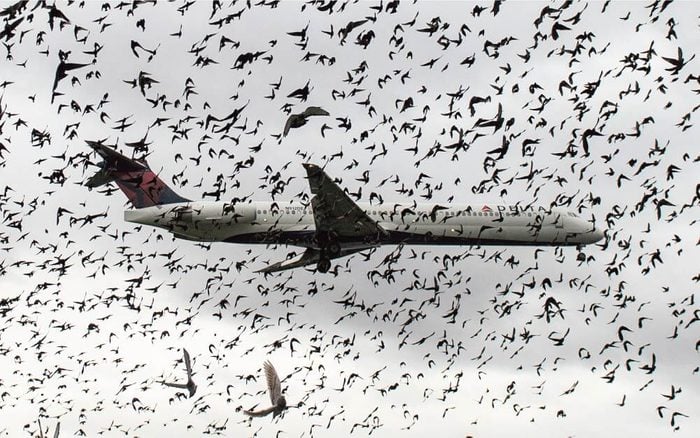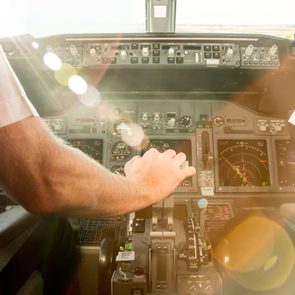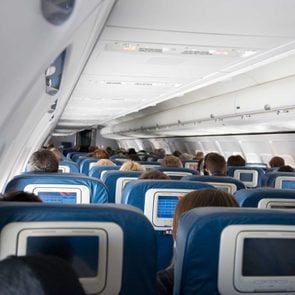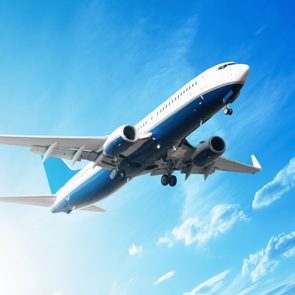What Happens When a Plane Collides with a Flock of Birds?
Updated: Nov. 13, 2022

It's a bird...it's a plane...it's a midair nightmare?
When airplanes take off into the sky, they’re not the only ones flying around up there. The planes are in the birds’ territory now, and it’s inevitable that sometimes, these winged things will cross paths.
The particular instance pictured here might be enough to make you consider never flying again, but it actually has a happy ending! In November 2015, this Delta flight encountered the pictured avian horror show on its way to Reagan National Airport in Washington, D.C. Astonishingly, the plane touched down at Reagan without incident, and the birds were safe too. Washington, D.C. is one of the airports with the scariest takeoffs and landings in the world—but not actually because of birds!
But are occurrences like this common, and do pilots do anything in particular to try to prevent them?
How often do planes hit birds?
We’ve been sharing the sky with its native aviators since the Wright brothers took off in 1903. And, well, yes, bird strikes are fairly common. According to the FAA, which keeps track of every reported strike in the United States, there were a total of 16,000 wildlife strikes in 2018, an average of more than 40 a day. But usually, while unfortunate for the birds, they don’t present any danger to the pilot or passengers; though they do sometimes result in minor damage to the plane, fliers likely won’t even notice. And even for the U.S. airports with the most bird strikes, the strike rate is still below 0.2 percent.
A more concerning fact, though, is that the number of wildlife strikes per year has been steadily increasing. According to the FAA, in 1990, wildlife strikes numbered only around 1,800 per year, a far cry from 16,000.
Why are bird strikes so common?
Well, there’s no one reason for the increase, but there could be a couple of potential culprits. Airplanes and the technology that make them up are constantly changing, and airplanes are larger, faster, and quieter than ever, making them harder for birds to avoid. Plus, well, there are a whole lot more flights taking off day after day than there were in 1990, increasing the likelihood of bird strikes. And that numbers difference might not actually be that extreme, either; USA Today theorizes that, after Canadian geese took out both engines on Captain “Sully” Sullenberger’s plane in 2009, leading to the Miracle on the Hudson, reporting of bird strikes just got far better.
What do planes do to avoid birds?
Perhaps surprisingly, not very much. The white color of planes is already beneficial for all involved; it’s a color that, according to Human-Wildlife Interactions, is easy for birds to spot. (But it’s actually not the only reason airplanes are white.) In addition, planes are noisy! Roaring engines keep the majority of birds at bay. Pilots are also trained to be on the lookout for and avoid obstacles, so often it’s not too much trouble for them to avoid wildlife. And though bird strikes do happen—and sometimes do endanger the plane, as in the case of Captain Sully—more often than not, they’re nothing to worry about. Only a couple of these 19 terrifying stories of real pilots’ scariest moments involve birds.




